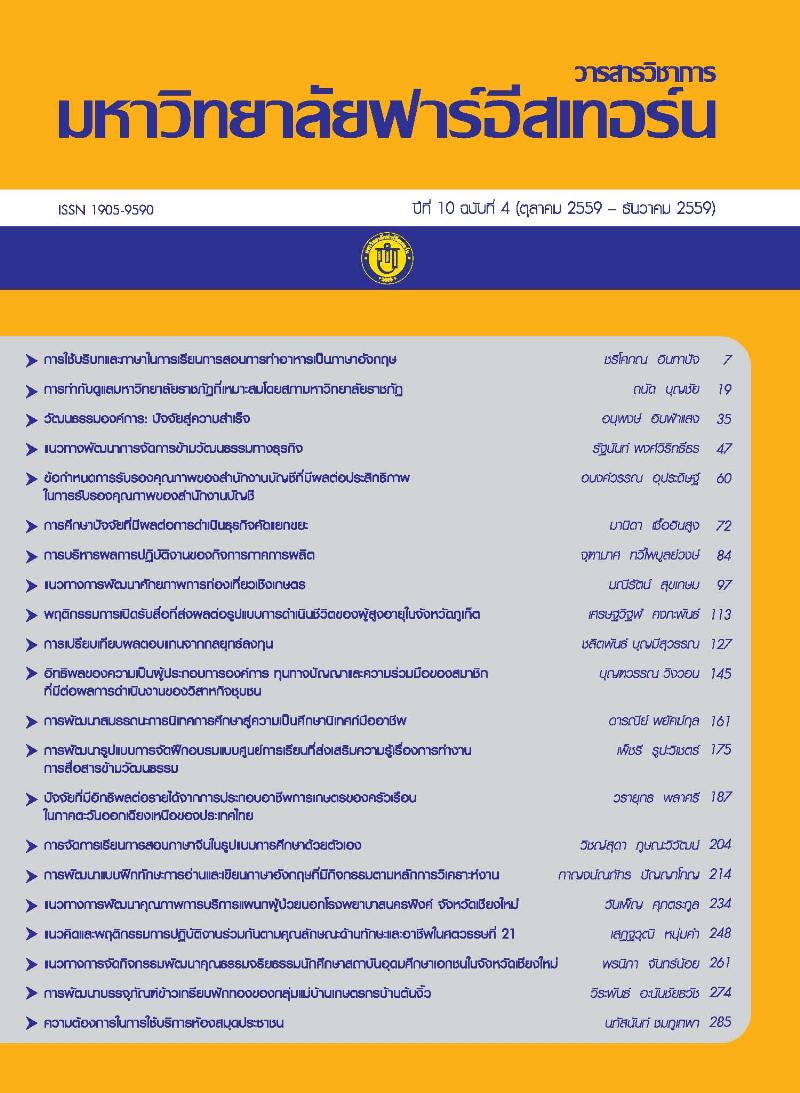Using Content and Language Integrated Learning (CLIL) in Teaching How to Cook in English
Main Article Content
Abstract
The purposes of this article are to present the Content and Language Integrated Learning (CLIL), and to share the idea concerning English teaching methodology with the teachers of English and those who teach contents in courses using English language as the medium of instruction in order to benefit the instructors. Furthermore, this article presents the four elements (4Cs) of CLIL, namely, the context, communication, cognition, and culture which are concerned with themes of the course including advantages and disadvantages of CLIL. In addition, this article points out how CLIL is applied for teaching English with the content of cooking: making egg with grilled shrimps salad. In this application, the writer made the models of food by himself such as eggs, vegetables, shrimps and toaster, from paper and plastic for encouraging students to learn English. This above-mentioned methodology can be beneficial for English teachers to apply in their language class.
บทความนี้มีวัตถุประสงค์เพื่อนำเสนอเรื่องบริบทและภาษาที่ใช้ในการเรียนหรือที่เรียกว่า CLIL และเพื่อแสดงความคิดในเรื่องของวิธีการสอนภาษาอังกฤษสำหรับอาจารย์ด้านภาษาอังกฤษ และผู้ที่สอนเนื้อหาในรายวิชาโดยใช้ภาษาอังกฤษเป็นสื่อในการเรียนการสอน เพื่อเป็นประโยชน์ต่ออาจารย์ผู้สอน นอกจากนั้นบทความนี้ยังเป็นการนำเสนอเกี่ยวกับรูปแบบทั้งสี่ด้านของ CLIL คือ บริบท การสื่อสารความคิดและวัฒนธรรม ซึ่งเกี่ยวเนื่องถึงตัววิชาในการเรียนการสอนรวมถึงข้อดีข้อเสียของ CLIL
อีกประการหนึ่ง บทความนี้เป็นการนำเสนอวิธีการประยุกต์การเรียนโดยใช้บริบทเพื่อการเรียนภาษาเข้ากับบริบทของการทำอาหารโดยใช้ภาษาอังกฤษ; การทำไข่กับกุ้งย่างสลัดโดยการประยุกต์นี้ผู้เขียนได้ทำ
แบบตัวอย่างของไข่ ผัก กุ้งและเตาปิ้งจากกระดาษและพลาสติก เพื่อเป็นการกระตุ้นนักเรียนในการเรียนภาษาอังกฤษโดยวิธีการสอนดังกล่าวสามารถเป็นประโยชน์ต่ออาจารย์สอนภาษาอังกฤษที่จะประยุกต์ใน ห้องเรียนภาษาได้
Article Details
1. Any views and comments in the Journal of Social Innovation and Lifelong Learning are the authors’ views. The editorial staff have not to agree with those views and it is not considered as the editorial’s responsibility.
2. The responsibility of content and draft check of each article belongs to each author. In case, there is any lawsuit about copyright infringement. It is considered as the authors’ sole responsibility.
3. The article copyright belonging to the authors and The Far Eastern University are copyrighted legally. Republication must be received direct permission from the authors and The Far Eastern University in written form.

